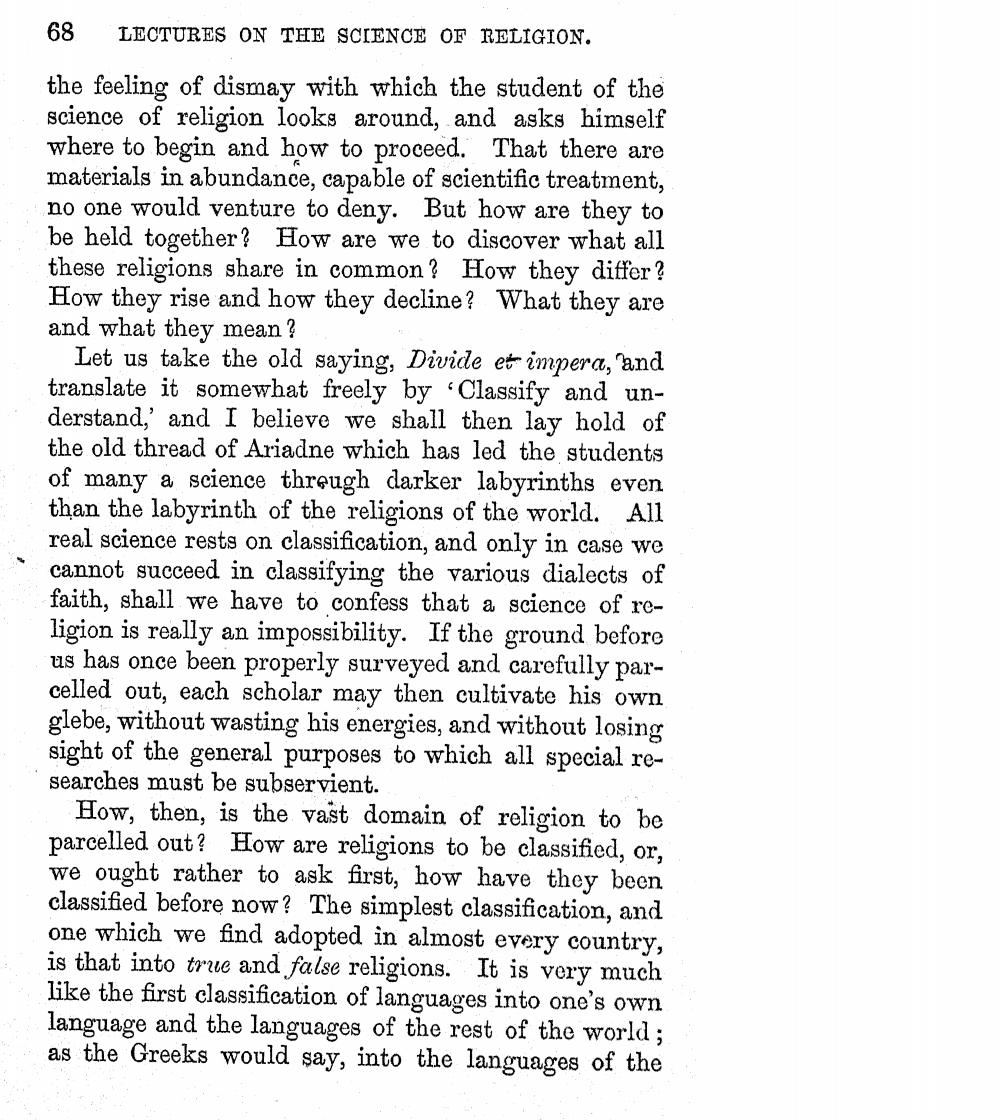________________
68 LECTURES ON THE SCIENCE OF RELIGION.
the feeling of dismay with which the student of the science of religion looks around, and asks himself where to begin and how to proceed. That there are materials in abundance, capable of scientific treatment, no one would venture to deny. But how are they to be held together? How are we to discover what all these religions share in common? How they differ? How they rise and how they decline? What they are and what they mean?
Let us take the old saying, Divide et impera, and translate it somewhat freely by Classify and understand,' and I believe we shall then lay hold of the old thread of Ariadne which has led the students of many a science through darker labyrinths even than the labyrinth of the religions of the world. All real science rests on classification, and only in case we cannot succeed in classifying the various dialects of faith, shall we have to confess that a science of religion is really an impossibility. If the ground before us has once been properly surveyed and carefully parcelled out, each scholar may then cultivate his own. glebe, without wasting his energies, and without losing sight of the general purposes to which all special researches must be subservient.
How, then, is the vast domain of religion to be parcelled out? How are religions to be classified, or, we ought rather to ask first, how have they been classified before now? The simplest classification, and one which we find adopted in almost every country, is that into true and false religions. It is very much like the first classification of languages into one's own language and the languages of the rest of the world; as the Greeks would say, into the languages of the




